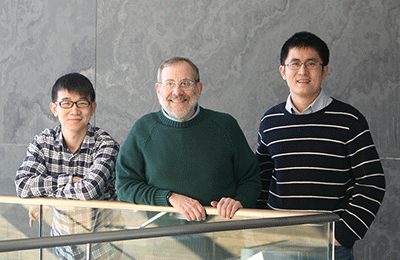Recovery from injury to the mammalian brain or spinal cord is notoriously poor, and a big part of the problem lies in the limited ability of damaged neurons to regenerate. In some regions, many of the injured neurons die and in most cases few of the survivors extend new axons. In trying to find ways to improve regeneration and recovery, researchers have often studied the optic nerve, which contains the axons of retinal ganglion cells (RGCs) that connect the eye to the brain. Following damage to the mouse optic nerve, >80% of RGCs die and hardly any survivors extend axons. Regeneration can be elicited from a minority of RGCs by a variety of experimental manipulations, but the number of axons and their ability to reconnect with the brain remains limited.
Why are survival and regeneration poor? So far attention has focused on the idea that the treatments administered are somehow inadequate. In this paper, Duan et al. explore another possibility. RGCs can be divided into at least 30 distinct types, based on structural, physiological and molecular differences. In past work or regeneration, they have all been counted together. Duan et al. wondered whether some types survived and extended well while others fared poorly. Using markers for multiple types, they were able to test this idea. The study was led by Joshua Sanes, the Jeff C. Tarr Professor of Molecular and Cellular Biology and Director of the Center for Brain Science, and Zhigang He, Professor of Neurology at Children’s Hospital. Experiments were performed by Xin Duan and Mu Qiao in the Sanes lab and Fengfeng Bei in the He lab. The work was published in the March 18 issue of Neuron.
Duan et al. found dramatic differences among types. Among that survived best were so-called “alpha-RGCs.” And among the survivors, alpha-RGCs account for almost of the regeneration following down-regulation of a gene called PTEN that He and colleagues had previously studied. Thus, seemingly modest regeneration really reflects a conflation of different populations with different fates.
One value of this work is that provides a means to search for the factors that encourage regeneration – one would expect that they would be present at higher levels in alpha-RGCs than in other RGCs. Indeed, Duan et al. found that alpha-RGCs preferentially express a protein called osteopontin as well as receptors for a growth factor called IGF-1 – and then went on to show that administration of osteopontin and IGF-1 promotes regeneration as well as downregulation of PTEN. Thus, this work provided new insight into the reason for limited regeneration, identified new regeneration-promoting factors, and provided a strategy for seeking yet other ones.
Read more in Neuron or download PDF.
Read more in the Harvard Gazette


